An artistic view from space: Supraspectives combines the fascinating aesthetics of satellite images with a critical examination of surveillance and the use of space.
For Supraspectives, the artist duo Quadrature has collected the orbital data of 590 current and former spy satellites – a third of which are now space debris, yet they continue to orbit the earth and fly over us regularly. The installation calculates the trajectories of these satellites in real time and speculatively reconstructs what they could “see”. This results in artistically distorted visual worlds, some of which show satellites close to the exhibition site, others particularly interesting or unusual images from space.
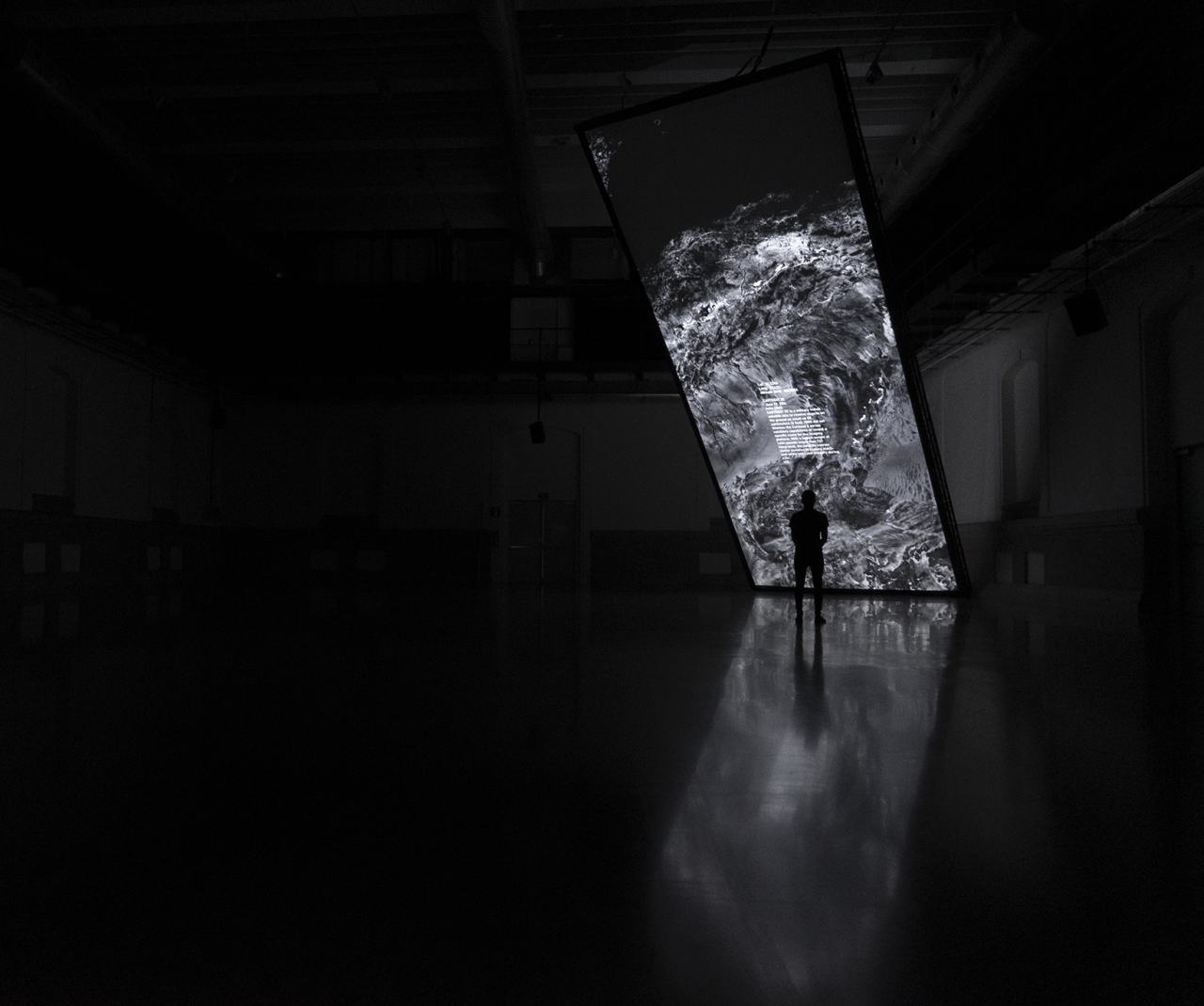
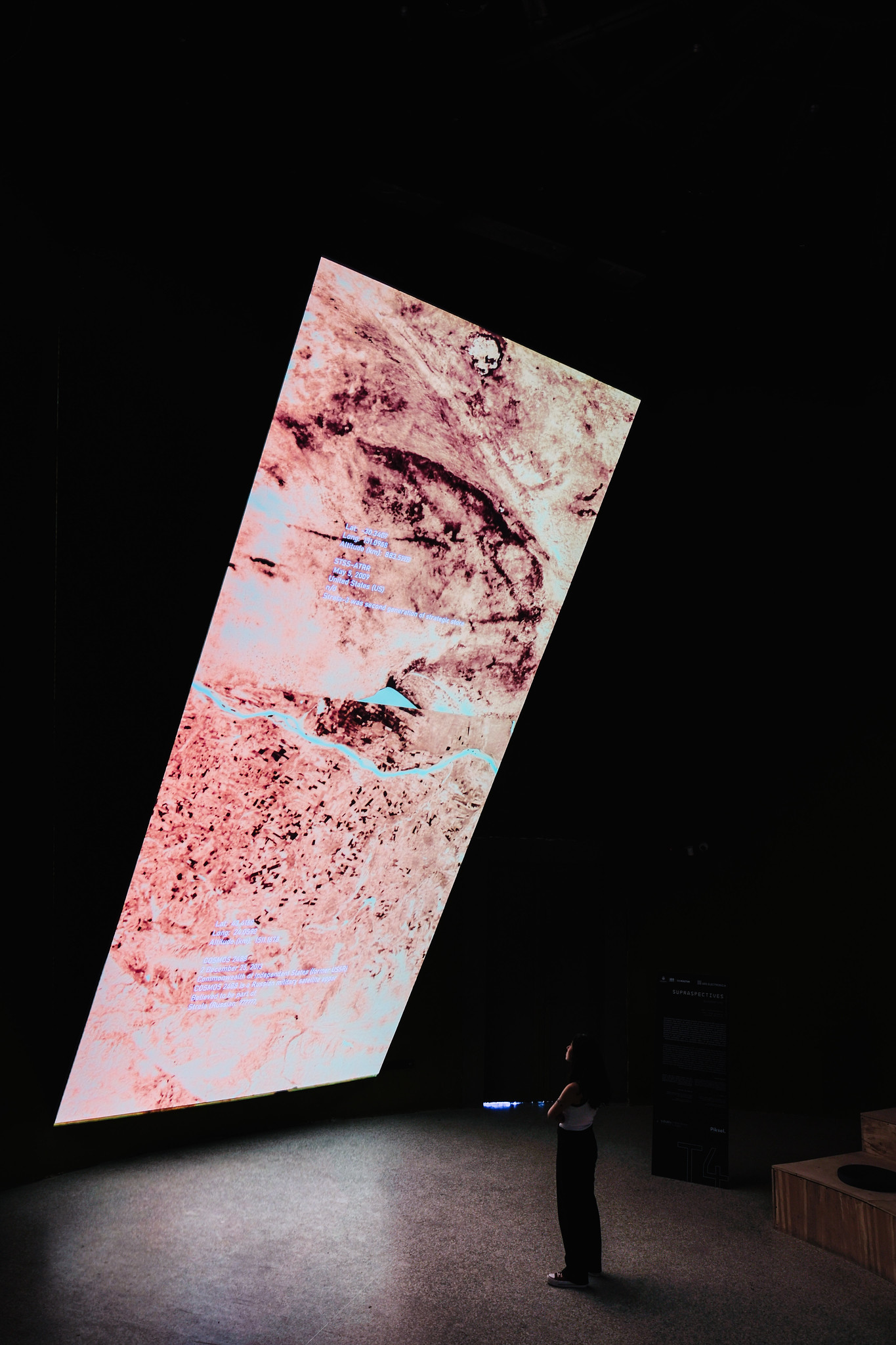
A specially built motorized antenna on the roof also receives live radio signals from the satellites currently passing overhead and converts them into sound. Each time a connection is established, information such as the satellite’s country of origin or launch year appears on the screen.
Supraspectives thrives on an exciting contrast: the fascinating aesthetics of the earth from afar and the critical awareness that many of these views serve military or surveillance purposes.
The work was created at Medialab Tabakalera, in cooperation with Ars Electronica and astrophysicists Silvia Bonoli and Raul Angulo from the Donostia International Physics Center (DIPC), with the support of the Medialab’s astronomy team and the local amateur radio community.
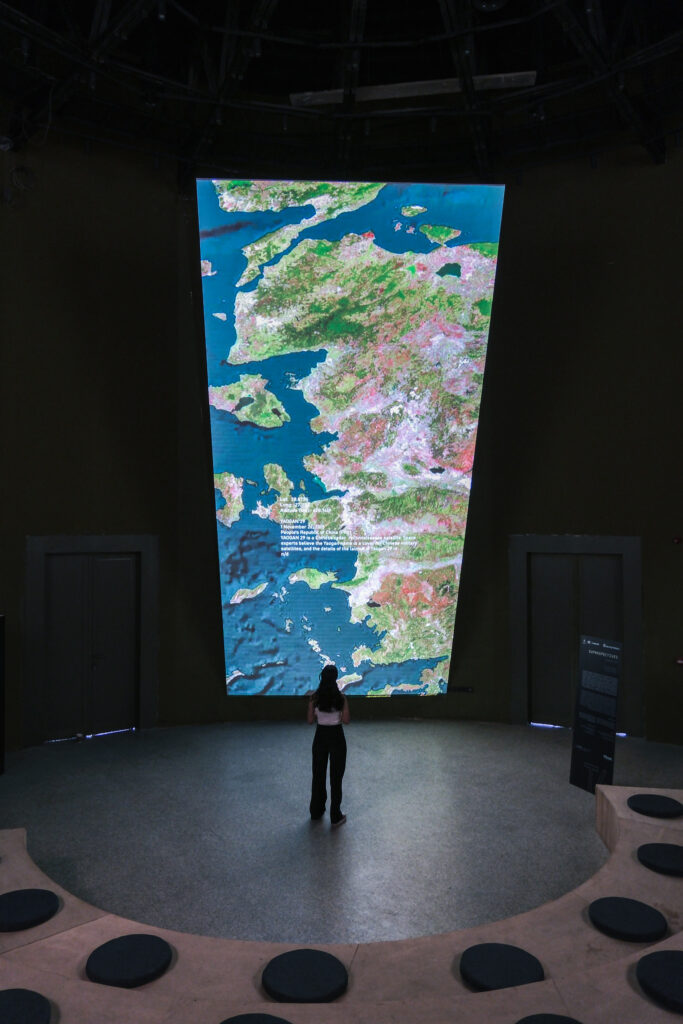
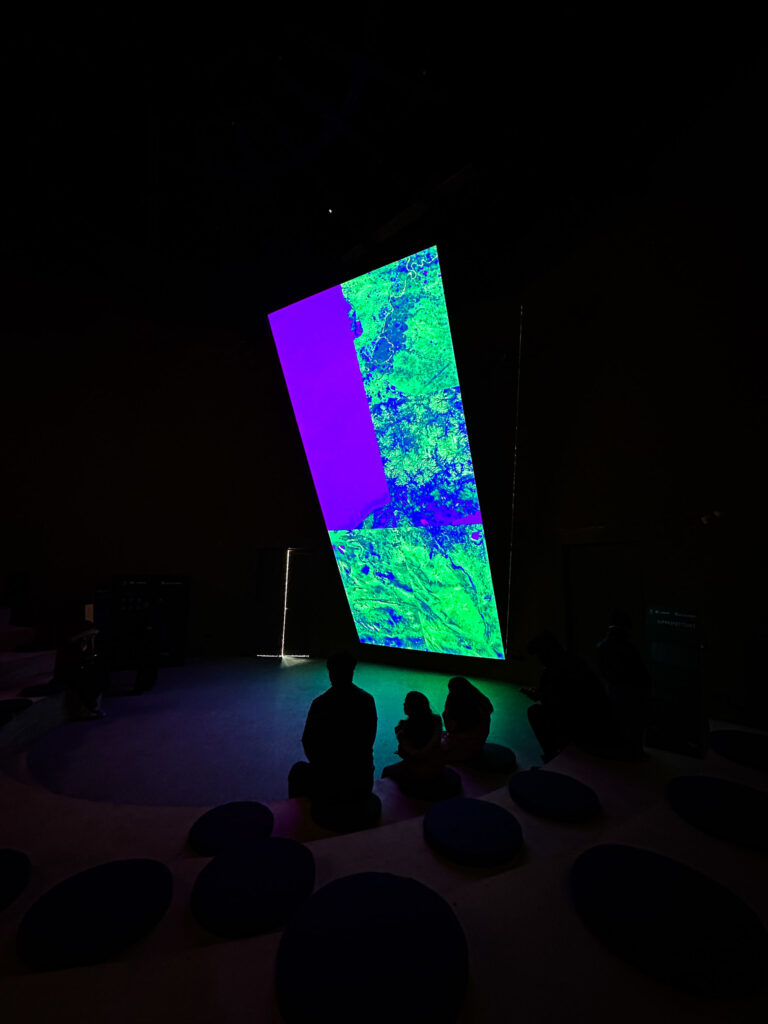
Data basis:
Mike McCant, Gunter’s Space Page, satellitenwelt.de u. v. m.
Video
Interview: “We feel a bit like explorers ourselves”
In 2016, Ars Electronica spoke to the artists Juliane Götz, Sebastian Neitsch and Jan Bernstein, who is no longer part of the collective, about their fascination with space and their planned residency at the ESO sites in Chile. Although they do not talk directly about Supraspectives, many of the ideas and artistic approaches that were formulated at the time also apply to this work. You can read the full interview with Quadrature from 2016 on the Ars Electronica blog:
Here are a few interesting excerpts:
“Outer space as a location is very real and at the same time intangible. Its size and endlessness make it an incredibly abstract, almost unreal idea, the dimensions and contents of which often exceed our powers of imagination. These boundaries of the possible and the feasible, of the intellect and of knowledge are what interest us most.”
– Jan Bernstein
Satellites in particular are a central motif for Quadrature – then as now:
“We, humankind, have now extended our sphere of action from the Earth out into the cosmos. In the form of satellites, we’ve created a new level of infrastructure that’s constantly orbiting above us, helping us and observing us.”
– Sebastian Neitsch
Jan Bernstein also emphasizes the physical reality of this technology:
„Und dann sieht man nachts plötzlich über sich eine dieser Maschinen leuchtend vorüber fliegen und weiß: die sind da tatsächlich.“
Juliane Götz also emphasizes the research character of her work:
“Actually, we feel a bit like explorers ourselves, like we’re trailblazers who are being permitted to penetrate a remote, inaccessible region to obtain insights into another world.”
About the artists
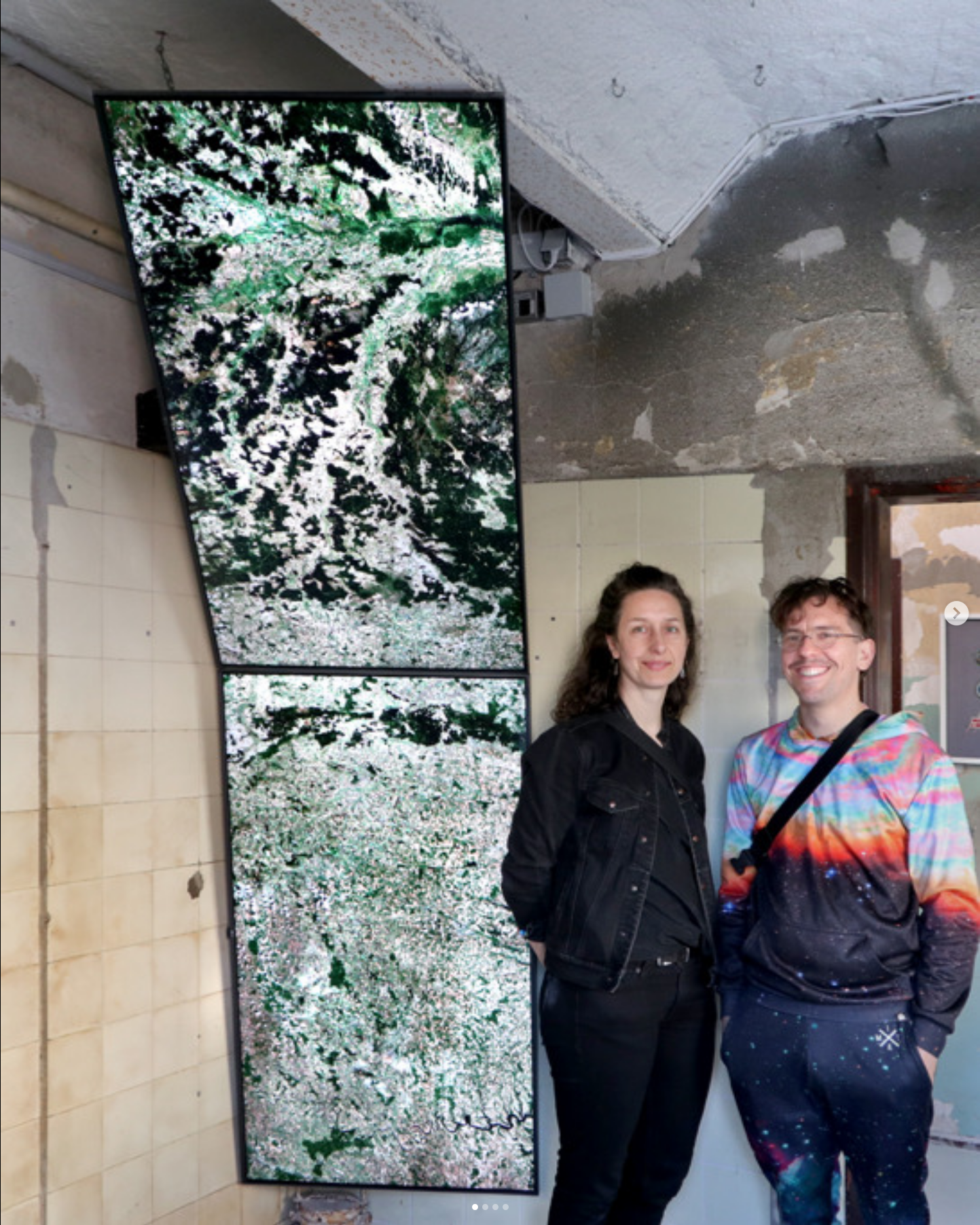
Quadrature
Quadrature is a Berlin-based artist duo (a trio until 2016) whose artistic research is based on data and physical experiments. For Juliane Götz and Sebastian Neitsch, technology is a tool to “read” and “write” realities. Their transdisciplinary practice includes time-based performances, installations, sculptural works and two-dimensional pieces. For several years, they have been intensively engaged with the methods and histories of exploring our world and the cosmos. They understand the universe as a simultaneously intangible and very real place where elementary emotions and complex scientific theories meet. The limits of human perception and its material representations run like a common thread through their work. They have received several awards for their work, including the Prix Ars Electronica (2015, 2018), grants from the Kunstfonds Bonn, the Akademie Schloss Solitude, La Becque and fellowships from PODIUM Esslingen and the Hertz-Lab at the ZKM Karlsruhe. Her works can be seen in exhibitions and at festivals worldwide.

